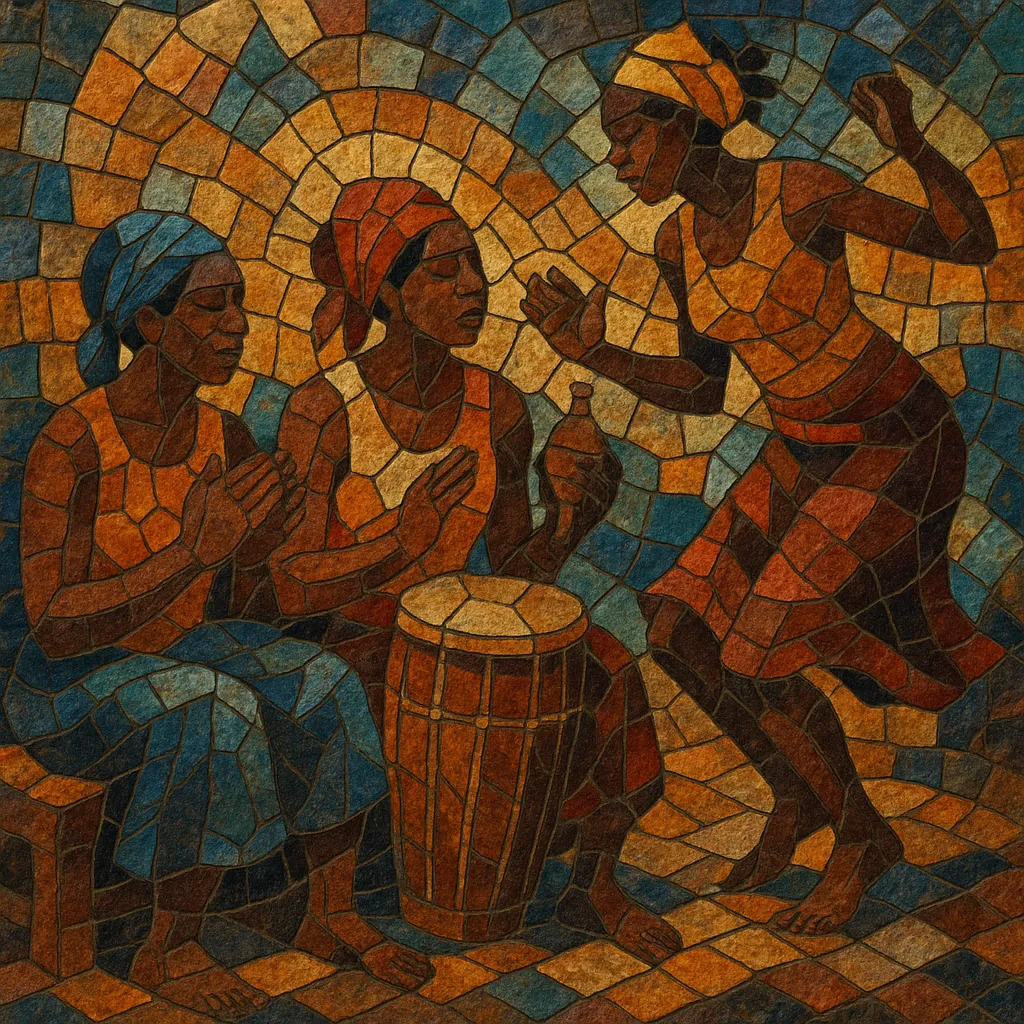
Batuque (batuku in Cape Verdean Creole) is a traditional music-and-dance genre from Cape Verde, especially associated with the island of Santiago. It is communal, percussion-driven, and built around call-and-response singing led by an improvising soloist (the finaçon) and answered by a chorus of batukadeiras.
The core sound comes from tightly interlocking handclaps, thigh-slaps using a rolled cloth (tchabeta), foot stomps, and, in modern settings, added hand drums and shakers. Cyclical grooves in a lilting 6/8 or 12/8 feel, social commentary, praise, playful satire, and storytelling define its aesthetic, while the dance forms a ring where participants take turns in expressive movements.
Batuque emerged among Afro-Cape Verdean communities on Santiago during the 19th century, with roots in West African ring-dance and work-song practices carried by enslaved and free Black populations under Portuguese colonial rule. It evolved as a women-centered practice: groups of batukadeiras provided rhythm, while a lead singer (finaçon) improvised topical verses.
During parts of the colonial era, batuque—like other Afro-diasporic practices—faced social stigma and periodic suppression. Despite this, it persisted in domestic and community spaces, ceremonies, and neighborhood gatherings, maintaining its role as social commentary, oral history, and communal bonding.
Urbanization, migration, and the rise of other Cape Verdean genres (morna, coladeira, later funaná) reduced batuque’s mainstream visibility. From the 1990s onward, artists and ensembles revitalized it on stage and record, preserving traditional ring formats while arranging pieces for guitar, bass, and percussion. The “Pantera generation,” inspired by composer Orlando Pantera, brought fresh harmonic and poetic approaches that reached international audiences.
Contemporary batuque bridges tradition and modernity. Women’s batuque ensembles continue community practice, while recording artists incorporate batuque grooves and finaçon poetics into roots-pop, worldbeat, and acoustic fusion. The genre now symbolizes cultural identity for Cape Verde and appears at festivals worldwide.

